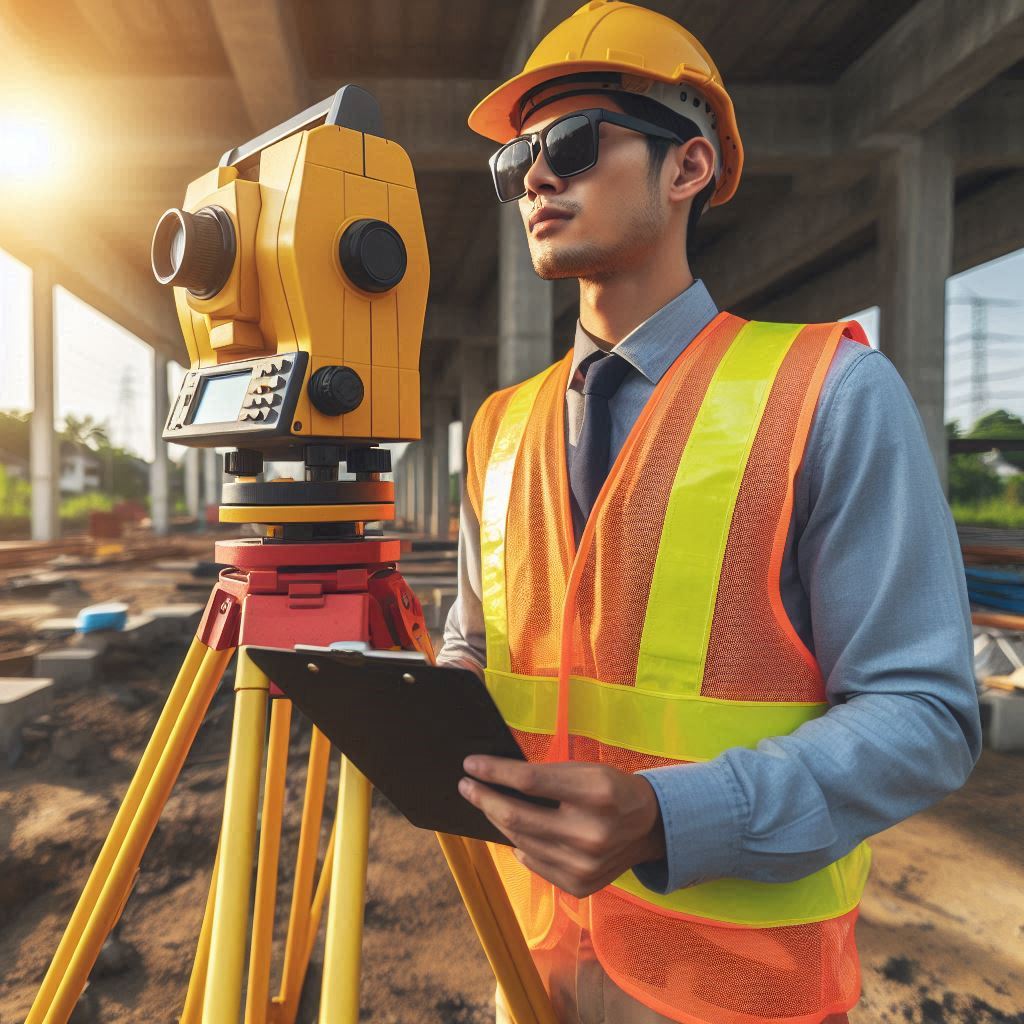Introduction
Overview of the Importance of Job Interviews for Drafter Positions
Job interviews play a vital role in securing a drafter position.
They provide a unique opportunity to demonstrate your technical skills, design experience, and overall suitability for the role.
In the drafting field, where precision and expertise are paramount, the interview process allows you to showcase your ability to handle detailed designs and complex specifications.
It‘s not just about proving your skills but also about fitting well with the company‘s culture and team dynamics.
A successful interview can significantly influence the hiring decision and set you apart from other candidates.
Why Navigating Job Interviews is Crucial for Success in Securing a Job as a Drafter
Effectively navigating job interviews is crucial for career success as a drafter.
A well-prepared interview approach highlights your technical prowess, problem-solving skills, and understanding of industry standards.
It allows you to communicate your value clearly and convincingly.
Mastering this process can distinguish you from other applicants and improve your chances of securing the position.
It ensures you present yourself as a strong candidate, ready to contribute effectively to the role and advance your career in drafting.
Research the Company
Importance of Researching the Company Before the Interview
Before your interview, researching the company is crucial.
Knowing the company‘s history, products, and culture helps you make a strong impression.
This preparation demonstrates your interest and commitment.
It also equips you with relevant information to discuss during the interview.
Ways to Gather Information About the Company, Including Its History, Products, and Culture
Start by exploring the company‘s website.
Review the “About Us” section to understand their history and mission.
Check recent news releases for current developments and initiatives.
Look into their products or services to know what they offer.
This foundational knowledge is essential for tailored responses.
Explore the company‘s social media profiles for additional insights.
Social media can reveal recent projects, company culture, and employee experiences.
Engaging with their content provides a broader view of their public image.
This insight helps you relate your skills and experiences to their needs.
Read reviews on job sites or forums to understand the work environment and management style.
Employee reviews can highlight workplace culture and common themes.
This information helps you prepare for questions about your fit with the company.
Leverage LinkedIn to find current and former employees.
Their profiles offer perspectives on the company‘s projects and culture.
If possible, connect with them for informational interviews.
This direct feedback can be particularly valuable.
How Understanding the Company Can Help Tailor Your Responses During the Interview
Understanding the company allows you to tailor your responses effectively.
Align your skills and experiences with the company‘s needs and values.
If the company emphasizes innovation, discuss your experience with creative problem-solving.
Highlight how your background aligns with their priorities.
Prepare specific questions about the company.
Asking informed questions demonstrates your preparation and genuine interest.
It shows you are serious about the role and respect the interviewer‘s time.
This approach can set you apart from other candidates.
Incorporate your research into your answers to show how you fit with the company.
For instance, if teamwork is a core value, share examples of successful collaborations.
Tailoring your responses based on your understanding of the company enhances your chances of making a strong impression.
Ultimately, researching the company increases your confidence and helps you present yourself as a well-informed candidate.
Tailoring your responses based on this research demonstrates your commitment and improves your chances of securing the job.
Read: The Role of Aerospace Engineers in Satellite Development
Prepare Your Portfolio
Importance of Having a Well-Organized and Updated Portfolio
A well-organized and updated portfolio is essential for a drafter.
It serves as a visual representation of your skills and experience.
An impressive portfolio highlights your ability to deliver quality work and adapt to different projects.
Keeping it current ensures you present your most relevant and recent work, making a stronger impact.
Tips for Showcasing Your Best Work in a Professional Manner
Select work samples that demonstrate your strongest skills and achievements.
Include a variety of projects to showcase your versatility.
Ensure each sample is presented clearly with relevant details such as project goals, your role, and outcomes.
High-quality images and concise descriptions enhance professionalism.
Organize your portfolio logically, typically starting with your best work.
Group similar projects together to create a cohesive narrative.
Use a clean, easy-to-navigate format, whether digital or physical.
Consistent formatting and labeling help make a positive impression.
In digital portfolios, ensure that the layout is responsive and user-friendly.
Use professional platforms or create a dedicated website for easy access.
Include interactive elements if possible, such as links to detailed project descriptions or client testimonials.
This can make your portfolio more engaging.
How to Highlight Relevant Experience and Skills That Align with the Job Requirements
Tailor your portfolio to the job you‘re applying for.
Focus on projects that align with the specific skills and requirements mentioned in the job description.
If the role emphasizes technical proficiency, include samples that highlight your expertise in relevant software or techniques.
Incorporate brief descriptions of each project, emphasizing how your work addresses the job‘s key requirements.
Highlight any accomplishments or challenges overcome that demonstrate your problem-solving abilities.
This targeted approach shows you are well-suited for the role.
Ensure that your portfolio clearly reflects your understanding of industry standards and trends.
Show how your work aligns with the company’s needs and how you can contribute to their projects.
This alignment reinforces your suitability for the position and strengthens your overall application.
A well-prepared portfolio not only showcases your best work but also reflects your professionalism and readiness for the role.
By organizing it effectively and tailoring it to the job, you enhance your chances of leaving a lasting impression and securing the position.
Read: Aerospace Engineering in Commercial Spaceflight
Practice Common Interview Questions
List of Common Interview Questions for Drafter Positions
When preparing for a drafter interview, be ready to answer questions such as:
- Can you describe your experience with CAD software? This assesses your technical proficiency.
- How do you handle tight deadlines or changes in project requirements? This evaluates your adaptability and problem-solving skills.
- Can you provide an example of a challenging project and how you managed it? This explores your experience and project management abilities.
- How do you ensure accuracy and quality in your drawings? This highlights your attention to detail and work standards.
- What methods do you use for communicating with engineers or architects? This checks your collaboration and communication skills.
Tips on How to Prepare and Practice Responses
To prepare effectively, start by reviewing the job description and identifying key skills and experiences required.
Draft responses to each common question, ensuring they reflect your relevant skills and experiences.
Practice your answers out loud to build confidence and fluency.
Use the STAR method (Situation, Task, Action, Result) to structure your responses.
This approach helps you present clear and concise examples of your work.
For technical questions, be ready to discuss specific tools or techniques you‘ve used.
Conduct mock interviews with a friend or mentor.
This practice can help you refine your responses and get comfortable with the interview format.
Focus on answering clearly and concisely, avoiding long-winded explanations.
Importance of Being Concise and Confident in Your Answers
Being concise and confident is crucial during interviews.
Clear and direct answers demonstrate that you can communicate effectively.
Avoid rambling or providing unnecessary details that may dilute your message.
Confidence shows that you are sure of your skills and experiences.
It helps you make a strong impression and reinforces your suitability for the role.
Practice helps build this confidence, making your responses more polished and impactful.
A well-prepared candidate who answers confidently and concisely is more likely to leave a positive impression.
This approach highlights your professionalism and readiness for the drafter position.
By practicing common questions and focusing on clarity, you enhance your chances of success in the interview.
Read: Essential Aerospace Engineering Textbooks

Dress and Behave Professionally
Importance of Dressing Appropriately for the Interview
Dressing appropriately for an interview is crucial as it creates a positive first impression.
Your attire reflects your professionalism and respect for the opportunity.
It also helps you feel confident and prepared, which can enhance your performance during the interview.
Tips on How to Dress Professionally for a Drafter Position
For a drafter position, aim for business casual attire.
This strikes a balance between formal and relaxed, suitable for most office environments.
For men, a collared shirt with dress pants or chinos is appropriate.
A blazer can be added for a more polished look.
For women, a blouse with dress pants or a skirt works well.
A professional dress or a blazer with a blouse can also be suitable.
Ensure your clothes are clean, well-fitted, and free from wrinkles.
Avoid overly casual items like jeans or t-shirts, as well as flashy accessories or strong perfumes.
Choose neutral colors and classic styles to convey professionalism without distraction.
Etiquette Tips for Behavior During the Interview, Including Body Language and Communication
Good etiquette and body language are key to making a positive impression.
Begin with a firm handshake and a friendly smile to convey confidence and approachability.
Maintain good posture throughout the interview, sitting up straight and leaning slightly forward to show engagement.
Make eye contact with the interviewer to demonstrate attentiveness and honesty.
Avoid fidgeting or crossing your arms, as these can signal nervousness or defensiveness.
Nod occasionally to show understanding and interest in the conversation.
When communicating, speak clearly and at a moderate pace.
Listen actively, allowing the interviewer to finish speaking before you respond.
Avoid interrupting and be concise in your answers.
Use polite language and express gratitude for the opportunity to interview.
Prepare thoughtful questions to ask the interviewer.
This shows your interest in the role and the company.
Avoid negative comments about previous employers, as they can reflect poorly on you.
Focus on positive aspects of your past experiences and what you can bring to the new role.
Overall, dressing and behaving professionally during an interview helps you make a strong impression.
By presenting yourself well and demonstrating good manners, you enhance your chances of success and show that you are a suitable candidate for the drafter position.
Read: The Impact of Aerospace Engineering on Modern Life
Showcase Your Technical Skills
Importance of Demonstrating Proficiency in Drafting Software and Tools
Demonstrating proficiency in drafting software and tools is crucial for a drafter position.
Employers look for candidates who can effectively use industry-standard software to produce accurate and high-quality work.
Proficiency in these tools shows that you can handle the technical demands of the job and contribute to the team from day one.
Ways to Showcase Your Technical Skills During the Interview
During the interview, highlight your technical skills by discussing specific software you‘ve used.
Mention any advanced features or techniques you‘re familiar with.
If possible, bring a digital portfolio or a tablet with examples of your work to demonstrate your abilities.
Be prepared to discuss how you‘ve used drafting software to solve problems or complete complex tasks.
Explain your approach to ensuring accuracy and efficiency in your work.
If the interview includes a technical assessment, approach it confidently and show your problem-solving process.
Transform Your Career Today
Unlock a personalized career strategy that drives real results. Get tailored advice and a roadmap designed just for you.
Start NowExamples of Projects or Tasks That Highlight Your Expertise in Drafting
Share examples of projects where your technical skills made a significant impact.
For instance, discuss a project where you used advanced CAD features to streamline the design process or improve accuracy.
Explain how your skills in specific tools contributed to successful project outcomes.
Another example could be a complex drafting task where you successfully integrated feedback from multiple stakeholders.
Highlight how you managed revisions and ensured the final design met all requirements.
These examples show your ability to apply technical skills in practical scenarios.
Describe any experience with unique or challenging projects.
For example, mention a project where you had to adapt to new software or integrate different types of drawings.
This demonstrates your flexibility and capacity to learn and apply new technologies.
Overall, showcasing your technical skills effectively involves demonstrating proficiency with relevant software, sharing detailed examples of your work, and discussing your approach to problem-solving.
This approach helps convey your technical capabilities and suitability for the drafter position.
Explore Further: Networking Tips for Aspiring Computer Engineers
Ask Thoughtful Questions
Importance of Asking Questions During the Interview
Asking questions during the interview is vital for several reasons.
It shows your genuine interest in the role and the company.
Thoughtful questions also provide you with valuable information to determine if the job and company are a good fit for you.
Additionally, it demonstrates that you have done your homework and are engaged in the interview process.
Tips for Preparing Insightful Questions to Ask the Interviewer
Before the interview, research the company thoroughly and identify areas where you need more information.
Prepare questions that reflect your knowledge of the company and its projects.
Ask about the company‘s culture, team dynamics, and the specific responsibilities of the role.
Examples include:
- What are the immediate priorities for someone in this role? This question helps you understand the expectations and initial tasks.
- Can you describe the team I would be working with? This provides insight into team structure and collaboration.
- How does the company support professional development and growth? This shows your interest in long-term career development.
- What are the biggest challenges currently facing the team or department? This can help you understand potential obstacles and how you might address them.
How Asking Questions Can Demonstrate Your Interest and Engagement in the Position
Asking insightful questions demonstrates that you are engaged and serious about the opportunity.
It shows that you have taken the time to research and think critically about the role and the company.
Thoughtful questions indicate that you are considering how you can contribute effectively and are interested in the company‘s future.
Engaging with the interviewer through questions also helps build rapport.
It turns the interview into a two-way conversation rather than a one-sided evaluation.
This interaction can leave a positive impression and reinforce your suitability for the position.
Overall, asking thoughtful questions during the interview highlights your enthusiasm and preparation.
It provides you with crucial information about the role and the company while also showcasing your proactive and engaged approach.
Follow-Up After the Interview
Importance of Sending a Thank-You Email or Note After the Interview
Sending a thank-you email or note after the interview is crucial.
It shows your appreciation for the opportunity and respect for the interviewer‘s time.
A prompt follow-up reinforces your interest in the position and keeps you top of mind as the hiring process progresses.
It also allows you to reiterate key points from the interview and express your enthusiasm for the role.
Tips for Crafting a Professional Follow-Up Message
When crafting your follow-up message, be concise and professional.
Start with a brief thank you for the interviewer‘s time.
Mention specific aspects of the interview that you found particularly engaging or insightful.
This shows you were attentive and interested.
Reaffirm your interest in the position and briefly restate why you believe you‘re a strong fit for the role.
This is your chance to address any key points or questions that were discussed during the interview.
Include a sentence or two about how you look forward to the possibility of contributing to the team.
Proofread your message carefully to avoid any grammatical or spelling errors.
Use a formal tone and address the interviewer by their proper title and name.
Send the email within 24 hours of the interview to ensure it‘s timely and relevant.
How Following Up Can Leave a Positive Impression and Show Your Continued Interest in the Position
Following up demonstrates professionalism and genuine interest in the role.
It reflects your attentiveness and commitment to the opportunity.
A well-crafted thank-you message can reinforce your qualifications and enthusiasm, potentially giving you an edge over other candidates.
By following up, you also show that you are proactive and detail-oriented.
This can leave a lasting positive impression on the interviewer, highlighting your suitability for the position.
It‘s an opportunity to express gratitude, reinforce your interest, and keep the lines of communication open as the hiring process continues.
Conclusion
Key Points for Successfully Navigating Job Interviews for Drafter Positions
Navigating job interviews for drafter positions requires careful preparation and a confident approach.
Start by thoroughly researching the company and understanding the role‘s specific requirements.
Prepare relevant examples of your previous work to demonstrate your skills effectively.
Practice answering common interview questions and develop strong, concise responses.
Dress professionally and arrive early to create a positive first impression.
Use a well-organized portfolio to showcase your skills and be ready to discuss your problem-solving methods in design challenges.
Encouragement to Apply the Outlined Tips and Strategies for a Successful Interview Experience
Implementing these strategies will enhance your performance and increase your chances of success.
Confidence and thorough preparation are crucial for standing out among other candidates.
Each interview offers a chance to showcase your expertise and fit for the role.
Stay positive and embrace the process as a learning opportunity.
Continuously refine your approach and remain persistent.
By applying these tips, you‘ll be better equipped to secure a drafter position and advance your career.
[E-Books for Sale]
The Big Book of 500 High-Paying Jobs in America: Unlock Your Earning Potential
$19.99 • 500 High-Paying Jobs • 330 pages
Explore 500 high-paying jobs in America and learn how to boost your career, earn more, and achieve success!
See All 500 High-Paying Jobs of this E-Book
1001 Professions Without a Degree: High-Paying American Jobs You Can Start Now
$19.99 • 1001 Professions Without a Degree • 174 pages
Discover 1001 high-paying jobs without a degree! Unlock career tips, skills, and success strategies for just $19.99!




